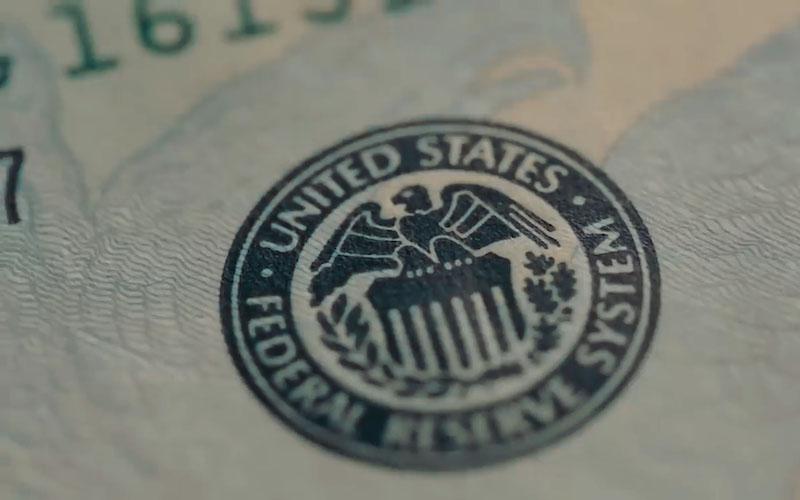Expectations of a Fed rate cut are rising, but disagreements remain: Why is the dollar "stable but not chaotic"?
2025-11-25 19:35:51

As a leading indicator of interest rate futures pricing on Wall Street, the CME FedWatch tool clearly shows the dynamic changes in expectations: On November 13, the probability of a 25 basis point rate cut in December once fell to 49.4%, close to the critical threshold of "50/50"; on November 20, although this probability fluctuated slightly to 44.4%, it still reflected the market's divergence on the policy direction. However, as key Federal Reserve officials released a series of dovish signals, expectations quickly shifted—as of November 25, the probability of a 25 basis point rate cut in December had soared to 80.7%, a significant increase from 69.4% the previous day, and "a high probability of a rate cut" has become the mainstream judgment in the current market.
Statements from institutions and officials further corroborated this shift, while also revealing the root of the disagreement. Federal Reserve Governor Christopher Waller, in his November 24th speech, explicitly signaled a dovish stance, stating that "most private sector data indicate a weak labor market, advocating for a December rate cut." However, he also emphasized that actions after January were "more uncertain" because lagging economic data from the government shutdown (such as the Beige Book) could reshape assessments of employment and inflation. San Francisco Fed President Daly also publicly stated his support for a December rate cut, arguing that "a sudden deterioration in the labor market is more likely and more difficult to control than a sudden surge in inflation."
This consensus within the Federal Reserve has formed: New York Fed President John Williams emphasized in late November that there is still "room for further policy adjustments," requiring a balance between the 3% annualized inflation rate in September and employment risks. The division in the October meeting minutes, where "many participants favored keeping rates unchanged, while a minority supported a December rate cut," has eased somewhat with the release of the latest data—leading institutions like Goldman Sachs have explicitly predicted that the Fed will initiate its third consecutive rate cut in December, with further cuts expected in March and June 2026, ultimately lowering the federal funds rate to the 3.00%-3.25% range. However, disagreements remain. JPMorgan Chase previously predicted a rate cut might be delayed until January, and a previous FactSet survey showed only a 22% consensus probability among economists. While these views are no longer mainstream, they reflect market caution regarding the sustainability of policy.
The tug-of-war between inflation and employment remains the core of the disagreement. The figure of 119,000 new jobs added in September may be revised downwards, indicating a cooling job market. Regarding inflation, Waller explicitly stated that the impact of tariffs on inflation is "one-off and minimal," with the inflation rate excluding tariffs estimated at around 2.4% or 2.5%, not the previously feared "stubbornly high." This combination of "weak employment and manageable inflation" makes the logic for a Fed rate cut in December clearer, but the uncertainty of lagging data still prevents the market from fully committing, which is key to why expectations haven't reached a "sure thing."
The US dollar remains stable without becoming chaotic: balanced expectations suppress extreme volatility.
Despite the rapid rise in expectations for interest rate cuts from their lows, the US dollar index has not experienced dramatic fluctuations, instead exhibiting a "stable high" characteristic. Since October, the main contract price of the US dollar index has remained stable in the 99-100.3 range, closing at 100.135 on November 24th. On November 19th, it even climbed from 99.49 to 100.055, without touching the lower limit range of 96-99 mentioned in the original text. The trade-weighted index has remained basically flat for three months, and the implied volatility of foreign exchange (the FX version of the VIX) has remained at a low level, far below the high point in 2024.

(US Dollar Index 1-hour chart source: FX678)
Analysts point out that this steady state stems from the restraint of one-sided betting by "balanced expectations." A report from the U.S. Treasury Borrowing Advisory Committee (TBAC) on November 4th noted that low market volatility was related to "the lack of key data due to the government shutdown and the stronger-than-expected resilience of the U.S. and global economies"—investors were unable to aggressively short the dollar due to a "100% rate cut" signal, nor would they frantically go long due to concerns about a "failed rate cut," with a wait-and-see attitude dominating trading behavior.
Different institutions have further enriched this logic with their interpretations: Cambridge Currencies, in its November 16 outlook, emphasized that the US dollar is currently in a "neutral to strong" state, with factors such as "the Fed's interest rate advantage has weakened, but factors such as capital repatriation under the uneven global economic recovery and the easing of trade uncertainty" offsetting this and suppressing volatility; while Larry Weizman, chief economist at Macquarie Group, pointed out that the US dollar has not appreciated significantly recently due to external uncertainties, only playing a small safe-haven role when inflation data is released, and unless a sharp drop in the stock market forces the Fed to release more aggressive easing signals, the US dollar will not experience a trend of depreciation.
The comparison of global policy cycles also provides support for the stability of the US dollar. In its November foreign exchange outlook, ING predicted that the US dollar will depreciate moderately before 2026, but "low volatility" will be the core feature. Even if the Federal Reserve cuts rates in December, it is only expected to cut rates 1-2 times in 2026, while the easing efforts of other major central banks such as the European Central Bank and the Bank of Japan may be more aggressive. This "relatively hawkish" policy difference neutralizes the suppressive effect of rate cuts on the US dollar.
The influence of political factors has weakened. "The pressure on the Federal Reserve from the Trump administration's tariff policies" is no longer the current market focus—officials like Waller have explicitly downplayed the long-term impact of tariffs on inflation, and the market is more focused on the alignment of Fed policy with economic data rather than external political interference. This consensus has prevented panic trading in the dollar due to concerns about policy independence. Morgan Stanley concluded in its November report that while the Fed's rate-cutting cycle has supported capital inflows into emerging markets, the dollar's "weakness" has been neutralized by global growth resilience and policy cycle differences, ultimately resulting in a "stable but not chaotic" situation.
In short, the current stable state of the US dollar is essentially an "equilibrium of expectations": bulls see policy divergences and a relative interest rate advantage, while bears bet on interest rate cuts and economic resilience, with both sides balancing each other. As the December meeting approaches and lagging economic data is released, this balance may be broken, but for now, "consensus amidst divergence" will continue to dominate the dollar's robust performance.
- Risk Warning and Disclaimer
- The market involves risk, and trading may not be suitable for all investors. This article is for reference only and does not constitute personal investment advice, nor does it take into account certain users’ specific investment objectives, financial situation, or other needs. Any investment decisions made based on this information are at your own risk.





















